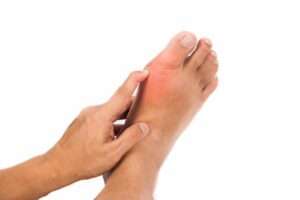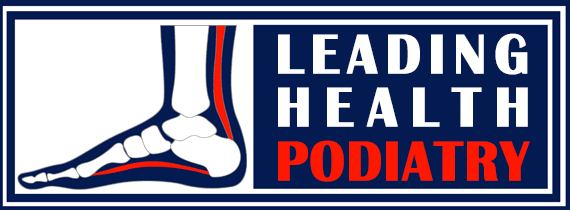Osteoarthritis (OA)
Osteoarthritis (OA) is the most common type of arthritis and is often referred to as the “wear and tear” arthritis. It affects the joints, causing pain, stiffness, and a reduced range of motion. OA primarily impacts older adults, although it can develop in people under 45 as well. The disease is most commonly observed in weight-bearing joints, such as the knees, feet, and hips. While it’s widely known for being a result of cartilage breakdown, OA actually involves all parts of the joint, including the bones, ligaments, and muscles.

What Happens in Osteoarthritis?
Osteoarthritis occurs when the cartilage that cushions the ends of the bones in the joint deteriorates over time. Cartilage is responsible for allowing smooth, pain-free movement between bones, but when it wears away, bones begin to rub against each other. The body’s natural healing response can cause further changes, including thickening of the joint capsule, inflammation of the synovium (the lining around the joint), and the formation of bone spurs. This leads to joint stiffness, swelling, pain, and reduced mobility.
Who is at Risk for Osteoarthritis?
Osteoarthritis can affect anyone, but several factors increase the likelihood of developing OA:
- Age: The risk increases significantly with age, especially after 45 years.
- Gender: OA is more common in women, particularly after menopause.
- Previous Injuries: Joint injuries, such as fractures or surgeries, can increase the risk of developing OA later in life.
- Genetics: Inherited genetic factors can make certain individuals more prone to OA.
- Obesity: Being overweight adds extra pressure on weight-bearing joints like the knees and hips, increasing the risk.
- Repetitive Stress: Jobs or activities that involve repetitive movements can contribute to joint stress, raising the likelihood of developing OA.
Signs and Symptoms of Osteoarthritis
The most common symptoms of OA include:
- Joint Pain: Pain that worsens with activity and eases with rest.
- Stiffness: Especially noticeable after periods of inactivity or in the morning.
- Swelling: Inflammation in the affected joints, often accompanied by warmth.
- Limited Range of Motion: Difficulty fully bending or straightening a joint.
- Crepitus: A cracking or popping sensation in the joint.
The severity of symptoms can vary from person to person, and they may fluctuate over time. Cold weather and time of day can also exacerbate symptoms.
Diagnosing Osteoarthritis
Osteoarthritis is typically diagnosed through a combination of physical examinations and medical imaging. Your doctor will evaluate your symptoms and may recommend X-rays or MRI scans to observe joint changes, such as cartilage loss, bone spurs, and other signs of OA.
Managing and Treating Osteoarthritis
While there is no cure for osteoarthritis, there are several effective treatments to manage the symptoms and slow the progression of the disease. Here are some common treatment options:
Footwear: Proper footwear plays a crucial role in managing OA, especially when it affects the feet and knees. Shoes should support your foot posture, cushion the feet, and alleviate pressure from painful joints. Custom shoes or orthotics can help improve alignment and provide additional support.
Custom Foot Orthotics: Custom-made orthotics can significantly reduce joint stress and improve comfort. Podiatrists can design orthotics using a 3D scan of your feet to ensure a perfect fit that meets your unique needs.
Physical Therapy: Targeted exercises can help maintain strength, flexibility, and joint function. Low-impact activities like swimming or cycling are great options for OA patients.
Activity Modification: If certain activities cause pain, a podiatrist or physiotherapist can help modify your exercise routine. Water-based activities, for example, can reduce stress on the joints while providing a good workout.
Medications: Over-the-counter pain relievers like ibuprofen or paracetamol can help manage pain and inflammation. In more severe cases, your doctor may recommend stronger medications or joint injections.
Conclusion
Osteoarthritis is a progressive condition that affects millions of people worldwide. Although it cannot be fully cured, early diagnosis and appropriate treatment can significantly improve quality of life. By wearing the right footwear, using custom orthotics, and participating in regular physical therapy, you can manage symptoms and maintain mobility. If you think you may have osteoarthritis, consulting with a healthcare professional or podiatrist can help you develop an individualized treatment plan to manage your condition effectively.
